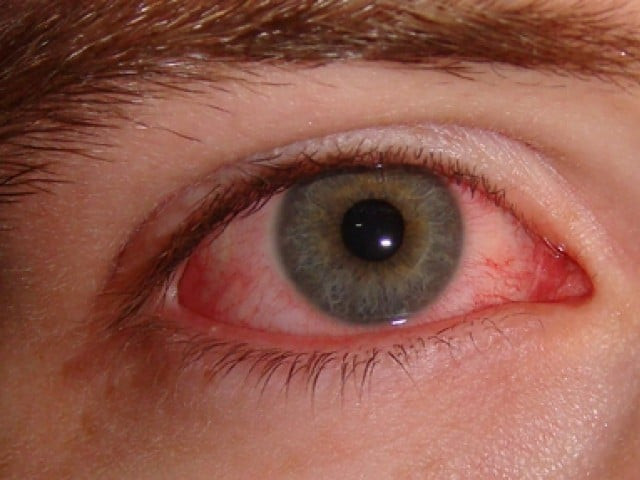Karachi witnesses surge in eye infection amid rainy season
Proactive approach to hygiene and meticulous care are the key to arresting the alarming rise of red eye infections

The metropolis has witnessed a surge in viral eye infections during the ongoing rainy season, with dozens of cases being reported on a daily basis. Public and private hospitals across the city have been grappling with the mounting cases of conjunctivitis, commonly known as red eye.
Jinnah Hospital, a prominent medical facility in the city, has recorded 50 instances in its Outpatient Department (OPD) each day. Of these, 25 cases pertain specifically to the red eye infection, afflicting both children and adults alike.
Leading Consultant Ophthalmologist, Dr Muhammad Moizuddin, has attributed this sudden surge to the transmission of the infection through direct contact with the ocular discharge of affected individuals. The infection, known to linger for a period of 8 to 10 days, manifests with a reddening of the eye, accompanied by moisture and discomfort. Dr Moizuddin advises the affected individuals to maintain strict hygiene practices, including separating their personal items such as towels and toiletries.
In the midst of this growing concern, the afflicted are advised to employ prescribed eye drops and clean tissues for the cleansing of their eyes. Cold water, it is noted, brings relief to the affected eyes, offering a temporary reprieve from the discomfort. The consensus remains that adherence to cautionary measures and impeccable cleanliness are pivotal in stemming the transmission of this highly contagious eye infection.
Detailing the symptoms of conjunctivitis, Dr Rabia Chaudhry, Assistant Ophthalmologist at Jinnah Hospital Karachi, emphasised the emergence of redness, itching, and inflammation of the eyes. She further noted the formation of lumps near the ears and, in some instances, the involvement of the cornea, potentially affecting the visual acuity of the individual.
Read also: Treatment of genetic diseases stressed
While a swift recovery is anticipated if the infection confines itself to the white part of the eye, instances where the cornea is compromised demand a longer healing timeline, spanning two to three weeks.
Dr Chaudhry highlighted the significance of precautionary measures, given the infection's propensity for person-to-person transmission. Unlike common misconception, she asserts that the infection isn't contracted through mere eye contact; rather, it is facilitated by direct exposure to the infected individual's ocular fluids. Notably, many cases have shown a co-occurrence of red eye with cold, flu, and cough symptoms.
Dr Chaudhry further imparted crucial advice on how to mitigate the risk of transmission within households and workplaces. By maintaining personal hygiene and avoiding shared items, individuals can considerably reduce the chances of spreading the infection. Proper hand washing before administering eye drops, coupled with careful application, forms a vital line of defence.
The sting of light often accompanies the infection, for which sunglasses and cold compresses can provide respite. Children have not been spared by this contagion; therefore special attention is urged to their well-being.



















COMMENTS
Comments are moderated and generally will be posted if they are on-topic and not abusive.
For more information, please see our Comments FAQ